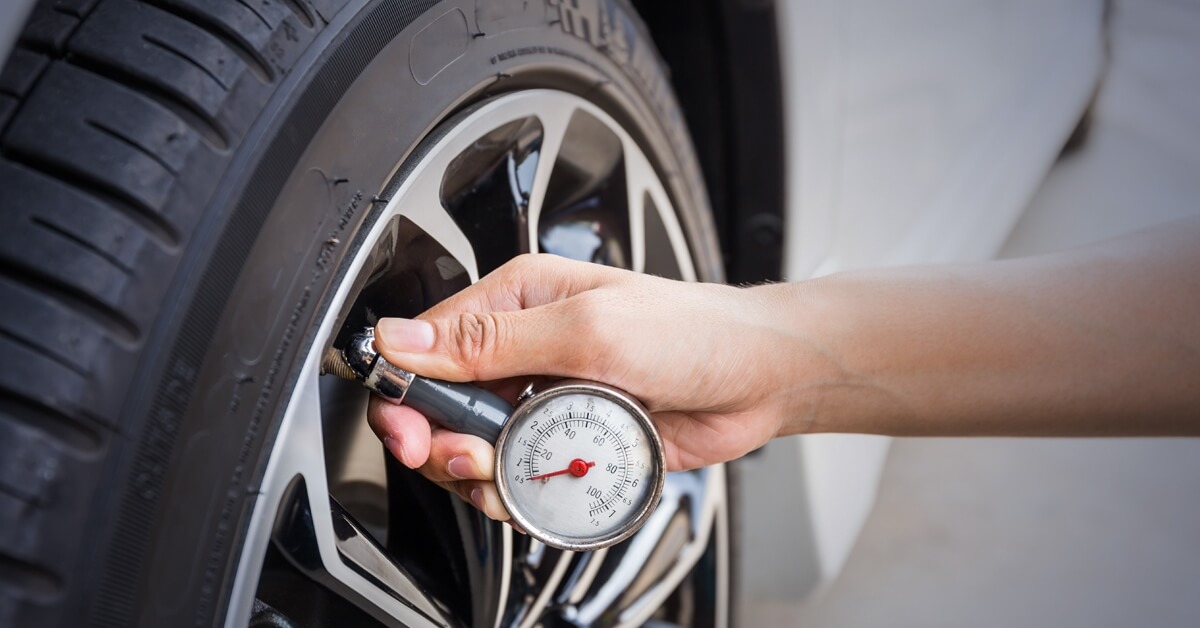How to find correct tyre pressure
Everything you need to know about tyre pressure.

While technology has led to the development of high quality, innovative tyres, it is still something as simple as the air in the tyre that carries the weight of the vehicle and enables the tyres to optimally grip the road. Did you know a vehicle running on tyres with incorrect pressure uses more fuel, reduces tyre life and is subject to safety risk on the road? Not only that, it also has an impact on the environment. Tyres that have incorrect inflation pressure consume more fuel, emitting extra pollutants in the atmosphere. Read further to understand the significance and impact of tyre pressure on everyday driving.
Why having correct inflation pressure is important?
With properly inflated tyres you can efficiently maneuver the vehicle, reducing your effort as well as the impact on the tyres. However, the experience is entirely opposite when the inflation pressure is incorrect. Let’s see how.
Underinflation and overinflation are two conditions that are equally unsafe.
- Underinflation - Under inflation is one of the most common reasons of tyre failure. A tyre with less air flexes more, as a result you end up with a soft tyre. A soft tyre has increased friction and increased rolling resistance which raises the tyre temperature. Overheating can cause amongst other things irregular tyre wear, longer braking distance and can even lead to tyre failure. Moreover, an unusually larger footprint also increases the chances of hydroplaning. With underinflated tyres, you will also notice signs like heavy steering and poor fuel economy.
- Overinflation - On the other hand a tyre that is overinflated flexes less. As a result, you will have a very hard tyre. A hard tyre means less traction and a rough and bumpy ride. Overinflation reduces the shock absorbing capability of the tyres. It implies that, in addition to a rough ride you are setting them up for cuts, punctures, or even total failure due to sudden impact caused by a pothole or a curb.
Therefore, it is important to always inflate the tyres with the recommended pressure for the best riding experience.
How to know what is the recommended pressure for your tyres?
Filling pressure in your tyres is a pretty simple process. The first thing you have to determine is what is the proper inflation for your tyre. There are two numbers that indicate pressure: 1) maximum pressure 2) operating pressure. The marking on the sidewall of the tyres indicates the maximum pressure. It is the maximum allowable pressure and not the recommended pressure. It simply means that it is the maximum pressure you can put in your tyre without jeopardizing the structural integrity of the tyre. So, the maximum pressure is not what you should inflate your tyre. The tyre infact has to be inflated to the operating pressure which is lesser than the maximum pressure. It is determined by the vehicle manufacturer and can be found on the placard, which is present on the door edge, glove box, fuel door or on the owner’s manual.
How to check tyre pressure?
Air pressure can be easily checked with the help of a calibrated accurate air pressure gauge. An air gauge is fairly cheap and a handy device that helps you easily check your car tyre pressure yourself.
To check the air pressure, take the cap off the valve and put the gauge on the valve. The gauge will show the pressure reading. If it doesn’t match the one mentioned on your placard or owner’s manual then you might have to add or remove air until it reaches the recommended number. Once that is done check the air pressure again with the gauge to make sure your tyres are inflated correctly. At the end do not forget to place the cap back to the valve stem. Check all your tyres including the spare if your car has one. In case the spare is a space saver type, follow the recommended pressure posted on its rim.
And, if you are not sure of the above procedure head to the nearest tyre service centre to get the tyre pressure checked by the technicians.
How often should you check tyre pressure?
For obtaining the best fuel economy and getting the most out of your tyres it is recommended to check the air pressure periodically or at least once a month, and definitely before a heading on a long drive, irrespective whether your tyres are filled with air or nitrogen. However, inspite of routine maintenance small air molecules manage to escape through the tyres causing small inflation losses. Hence, as a routine part of pre-trip inspection check the tyre inflation every day before you start your drive.
Remember, the pressure mentioned on the placard is the cold inflation pressure. Hence, ensure you check the pressure when the tyres are cold i.e before starting the ride at the beginning of the day because the tyres tend to heat up as they roll down the road which causes an increase in pressure. The tyres can heat up even if they have covered a small distance of around 3 kms. As a result the pressure reading on a heated tyre appears higher and if it’s above the recommended pressure then the immediate impulse is to deflate the tyre to release the excess pressure. But, if you do that the tyre becomes underinflated when it cools because the excess pressure in the tyre is temporary caused due to heat. So, never deflate tyres that are hot. However, if in a given situation it’s needed to adjust the pressure when the tyres are hot, inflate the pressure to 4 psi above the manufacturer’s recommended cold inflation pressure. And, when the tyres get cold again double-check the pressure to see if the operating pressure has been attained.
This explains that keeping your tyres properly inflated offers the best combination of tread ride, handling, speed, and riding comfort. So, check the tyre pressure regularly or you could also ask your TYREPLUS experts if you have any doubts. The tyre experts at the TYREPLUS centers are always ready to assist you in optimizing your tyre performance and getting the most from your investment.
